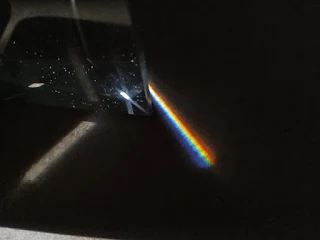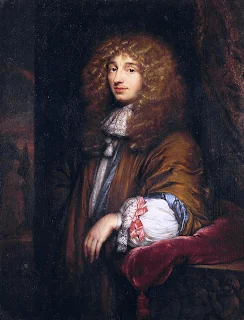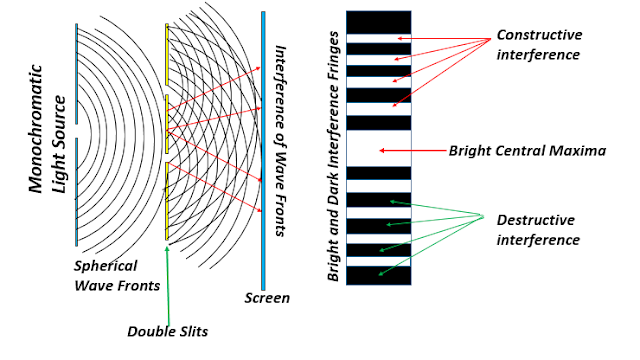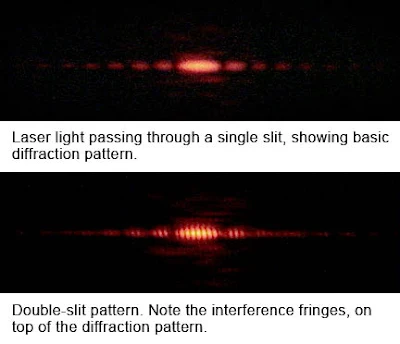MODERN PHYSICS AND THE OLD QUANTUM THEORY: THE WAVE-PARTICLE DUALITY OF LIGHT
The true nature of light has always been a subject of intense philosophical, as well as scientific debate. During the later half of the 17th century, as it often happens, there arose two distinct schools of thought. Those influenced by Sir Isaac Newton advocated that light must be composed of a stream of tiny particles or corpuscles. On the other hand, under the influence of Christiaan Huygens, some firmly believed that light propagates through space in the form of a luminous disturbance, similar to the ripples formed when a stone falls into an otherwise calm pond. Both of their viewpoints were contradictory, and consequently, there was no definite consensus. This debate continued for nearly 250 years, from Newton to Einstein, and nobody could even remotely figure out the absolute truth about the stuff that illuminates our whole universe.
Previous Article- The Existence of Photons
Newton and the Corpuscular Theory: Sir Isaac Newton's obsession with the study of light could have left him blind for the rest of his life. One day, he observed that a beam of sunlight, when incident upon a prism at a certain angle, could split the incident beam into seven different colours. This phenomenon is known as dispersion. When he placed another prism in front of the spectrum of colours, the seven colours readily combined to give the initial white light. At that time, physicists knew that light is a form of energy that travels from one place to another and undergoes phenomena like reflection, refraction, dispersion, diffraction, interference, and polarization. Newton also observed that a ray of light bends, i.e., deviates from its original path when it travels through a material medium like a glass slab or when it moves from water to air and vice versa. From these observations, he inferred that light behaves like a ray that travels in a straight line and is composed of a stream of tiny particles, called corpuscles. Newton's corpuscular theory could explain the mechanisms behind reflection, refraction, dispersion and the simultaneous phenomenon of reflection and refraction at the interface of a glass slab. He believed that the breaking up of white light into its constituent colours was due to the different sizes of the corpuscles. Therefore it became clear that the red corpuscles passing through the glass prism experienced the lowest bending since they were comparatively larger than the violet corpuscles, which deviated by a fair magnitude.
 |
| Portrait Painting of Sir Isaac Newton/Image Credits: Godfrey Kneller, Public domain, via Wikimedia Commons |
 |
| White light when passed through a prism undergoes dispersion and splits into a spectrum of seven different colours/Image Source: Author's Camera |
Huygens and the Wave Theory: Christiaan Huygens, one of Newton's contemporaries, advocated for a wave theory of light. Huygens proposed that light travels as a series of plane-symmetric waves originating from a single point source and diverge away radially through all space. Light waves were pictured to be analogous to sound waves, having specific wavelength and frequency. Since sound waves propagate via the vibration of air columns, light waves had to have some medium of transport because waves could not just travel through nothing i.e., the vacuum of space. For light waves to travel through vacuum, there had to be some all-pervading, invisible and undetectable medium, acting as a sort of carrier medium, which they called the luminiferous aether(This would be another article). Without the aether, light from the stars would not reach Earth in the first place.
 |
| Portrait Painting of Christiaan Huygens/Image Credits: Caspar Netscher, Public domain, via Wikimedia Commons |
According to Huygens' wave theory, when a primary plane wavefront of a luminous disturbance reaches an obstruction or a narrow opening per se, each point of that initial wavefront behaves as a source of secondary spherical wavelets, which spread out radially in all directions. The sum of the secondary wavelets gives the nature of the secondary waves. By assuming that these waves travel only in the forward direction, he could explain the phenomenon of reflection, refraction, and interference. Huygens, however, failed to give an adequate description of the phenomenon of diffraction of light around the edge of an obstacle and the mechanism behind polarisation. Those were developed almost a hundred years later by the French physicist, Augustine-Jean Fresnel.
Some Problems Still Remained: Although both ideas gained significant ground, there were some serious unanswered questions regarding the true nature of light. The particle viewpoint failed to explain the stuff which could be readily explained by the wave theory, and vice versa. If light behaved like a stream of microscopic particles travelling in a straight line, then an opaque object would completely block the passage of light and cast a shadow. But the formation of the Arago Spot, also known as the 'Poisson Spot' or the 'Fresnel Spot' indicates otherwise. When a point source of light meets a small, circular obstacle, then, from the corpuscular theory, we should have noticed a very dark shadow and no central bright spot. Huygens' wave theory could easily explain this phenomenon, based upon the calculations of Fresnel and careful experiments by Arago. Again, had light been a stream of particles, then it would have been unchanged whenever it passed through a pair of narrow slits. But in reality, it was observed that the incident beam after passing through a narrow slit diverged away and the resultant beam became wider than the width of the slit. This could only be explained by the wave theory, while the corpuscular theory failed miserably. And finally, after a game-changing experiment by Thomas Young, the corpuscular theory was abandoned and was not revived until Einstein's explanation of the photoelectric effect in 1905.
 |
| Schematic of Young's Double Slit Experiment and the formation of Interference Fringes/Image Credits: Author's Computer |
Young's double slit experiment: In 1801, Thomas Young's double-slit experiment was one of the most significant experiments of all time. The modern version of the double-slit experiment is quite similar to the original version, except the light source has now been replaced by lasers and two, very narrow slits are actually used. Young however, passed sunlight through a tiny hole and placed a thin card along the light's path, so as to split the incident beam into two equal parts. Much to his prediction, he observed that the light rays from one side of the card interfered with the other side, thereby giving rise to alternate dark and bright fringes. Just as two sources of water waves interfere with each other, or different sources of sound waves interfere to produce beats, Young showed, that light, indeed behave like a wave and interferes with itself. At certain points, the light waves underwent destructive interference(out of phase) and therefore cancelled out their effect to give rise to dark fringes. On the other hand, at certain points the light wave interfered constructively(in-phase) and produced bright fringes. The modern double slit experiment with a monochromatic source of light reveals a bright central maximum, followed by alternate bright and dark bands with decreasing intensity. But, for interference to happen, the source of the luminous disturbance must be monochromatic and coherent. And that explains why two sources of candlelight does not interfere as their phase differ and their frequency does not remain constant with time. Since Young used sunlight, so he observed a bright central region, followed by two or three bands of interference fringes of the different colours.
 |
| Single-Slit and Double-Slit Interference using Monochromatic(Red) Laser Light Source/Image Credits: Jordgette, CC BY-SA 3.0 , via Wikimedia Commons |
In spite of Young's ground breaking discovery, his wave theory was not immediately accepted as some members of the Royal Society still vouched for Newton's corpuscles. Many important experiments which were performed in the subsequent years could easily be explained by the wave theory like interference due to Fresnel's bi-prism, Lloyd's single mirror, Lloyd's double mirror and similar others. But as mentioned earlier, after the verification of the Fresnel spot by Arago, it was found that the wave theory gives an accurate description of the nature of light. And Newton's theory was finally abandoned in favour of Huygens.
Dual Nature: By the end of the nineteenth century, with the formulation of Maxwell's electromagnetic laws, it was firmly established that radiation has a wave nature. And in order to explain the phenomenon of diffraction, interference and polarization it was necessary to consider the wave theory. But after the publication of Einstein's analysis of the photoelectric effect and Compton's experiment of the scattering of a photon by a stationary electron, it was revealed that light also had particle nature. This gave rise to a new paradox. How can something have a dual-nature at the same time? The double-slit experiment clearly indicated that light has wave nature and therefore produces the characteristic interference pattern. If light were a stream of particles, then the interference would have never occurred and there would have been only two bright bands. A material particle cannot just interfere with itself. That would be preposterous. Naturally, physicists were themselves in a dilemma as to whether to prefer the particle or the wave view-point, since both were correct. So it was necessary to modify the double slit experiment.
This time the light intensity was to be reduced. It was assumed that probably the interference took place between different photons, so that when the intensity is reduced, the pattern might differ or even better, it might vanish! Everyone hoped to see two distinct slits. But mother nature had much greater plans. Even after reducing the intensity, the same interference pattern reappeared. It was soon observed that the interference pattern was independent of the intensity of light. Now there was only one way to settle this battle. The intensity was reduced further and further so that only one photon at a time was shot towards the slit. After a sufficient amount of time, the interference pattern again decided to show itself. If one of the slits is closed the pattern disappears. This was really strange. If a photon is like a discrete particle then it could either go through one slit at a time, not both. But the interference pattern proved otherwise. It was as if the photon knew that there were two slits and either broke itself into two parts, then passed through the slits and then interfered with itself, giving rise to the fringe pattern. But a photon just cannot split itself as none of the experiments which were performed hundreds of time even remotely indicate a process like this.
 |
| The VIBGYOR./Image Credits: Author's Camera |
When the same double slit experiment was performed with a stream of electrons, the interference pattern was observed again. Thus it was now evident that not only radiation, but even matter possessed dual nature. This phenomenon came to be known as the wave-particle duality of matter and radiation, and it was soon realised that the classical laws of physics were insufficient to provide a suitable explanation.
References:
- https://en.wikipedia.org/wiki/Double-slit_experiment
- Eisberg, Robert and Resnick, Robert. Quantum Physics of atoms, molecules, solids, nuclei and particles, John Wiley and Sons, Inc.
Next Article: Birth Of The Atomic Theory Of Matter


Comments
Post a Comment